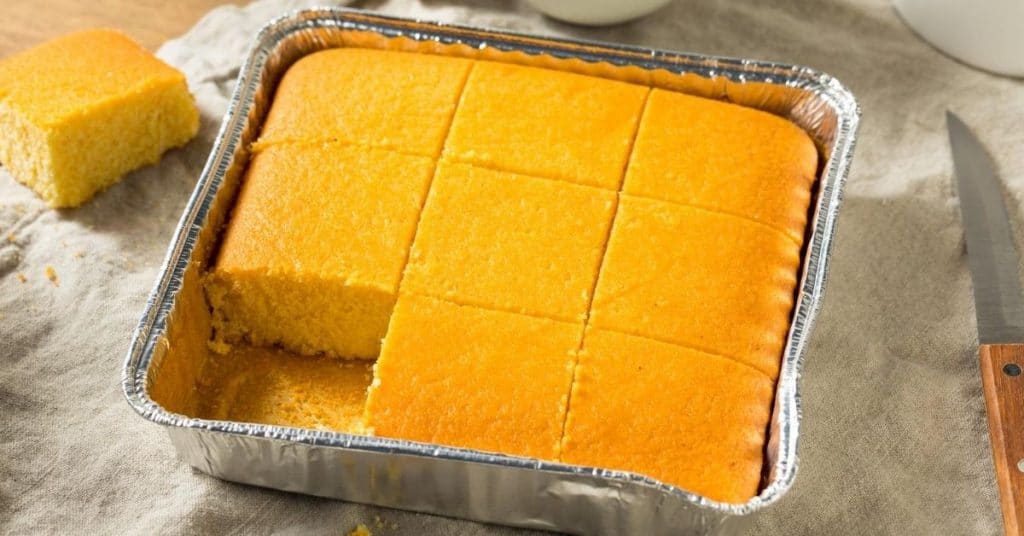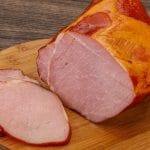In short, yes, you can freeze cornbread to prolong its shelf life. However, it may become slightly denser than freshly baked cornbread. Proper packaging and sealing are important to maintain quality and prevent freezer burn.
Known as a native American type of quick bread, cornbread can be enjoyed in a variety of ways, either on its own, or incorporated into a breakfast, lunch, or dinner meal.
Cornbread, however, doesn’t stay fresh very long, and an entire batch probably won’t be finished in one sitting.
Even storing cornbread in the fridge will only extend its shelf life by two or 3 days.
The good news is that cornbread freezes well and will safely extend its shelf life for a couple more months. You can also freeze cornbread muffins.
This not only prevents food waste but also provides you the opportunity to bake a double batch and freeze some for convenience in the future.
When freezing leftover cornbread, you need to package it properly to prevent it from spoiling. Here is a guide on everything you need to know about storing cornbread in the freezer.
Can Cornbread Be Frozen?
Yes, you can freeze cornbread to prolong its shelf life. Whether refrigerating or freezing cornbread, nothing quite compares to the freshly baked soul food. Although the quality and flavor remain good on freezing, frozen cornbread will be a little denser than the freshly baked version.
It is important to keep cornbread well sealed to avoid freezer burn and to prevent the absorption of odors. Follow the below guidelines when preserving cornbread in the freezer.
How To Freeze Cornbread
Step 1: Cool
Make sure the cornbread is cooled completely to room temperature before wrapping. Wrapping and freezing cornbread while it is still warm will cause freezer burn and result in a dry product once defrosted.
Step 2: Portion
Slice or cut the cornbread into portions. Remember that if you freeze the whole loaf, you will have to use the entire loaf once defrosted as you cannot refreeze it.
If you only need a few slices at a time, it is better to cut it before freezing so that you can remove only what you need from the freezer and keep the rest safely preserved.
Step 3: Wrap
Wrap the cornbread tightly in either plastic wrap or aluminum foil. Make sure to cover the entire bread and seal all the corners completely. There should be no exposed areas. Wrap cornbread muffins or mini cakes individually.
If you are freezing sliced cornbread, either wrap the slices individually or place a piece of parchment paper between the slices so that they do not stick to one another.
Step 4: Bag It
Place the wrapped cornbread into a freezer-friendly plastic bag or airtight container. You can place a few muffins together in one larger freezer bag, as long as they have been individually wrapped with foil or cling film. Squeeze any remaining air out of the bag before sealing.
If you are freezing a whole loaf or skillet cornbread, and do not have a large freezer bag or airtight container big enough, wrap it in another double layer of plastic wrap, ensuring all the corners are well sealed.
Step 5: Label and Freeze
Label the bag with the date and contents to keep track of how long it has been in the freezer. Place it in a way that it will not get squashed by other items.
How To Thaw Frozen Cornbread
The best way to defrost cornbread is overnight in the refrigerator. If you are tight on time, you can also thaw it at room temperature, however, the refrigerator is always the safer and preferred method. Keep the bread in its wrapping until it has defrosted.
When you are ready to enjoy your thawed cornbread or muffins, remove the wrapping and enclose it in a clean layer of foil. Place it in the oven to reheat at 350˚F to warm. You can also use the toaster as a quick fix to warm slices instead. Be careful not to overheat the cornbread as it will cause it to become dry.
Types of Cornbread
Cornbread is a round or loaf-style bread made with cornmeal, leavened with baking powder. It can be baked as a large bread, as corn cakes, muffins, and also fried. Due to the coarse nature of cornmeal, cornbread has a denser and more sandy texture than commercial bread made from wheat flour.
In the USA, two distinct types of cornbread can be classified as northern and southern cornbread with the main difference being the quantity of sugar, flour, and type of cornmeal used.
Southern cornbread is traditionally made with white cornmeal and buttermilk and includes very little sugar or flour.
Northern cornbread, on the other hand, is sweeter and more cake-like, made with a combination of wheat flour and cornmeal, a raising agent, eggs, dairy, and sugar. This version is lighter than its southern counterpart due to the higher ratio of wheat flour.
Often served with butter, cornbread can be eaten with breakfast, is a favorite at barbecues, served with chili con carne, or accompanied by pinto beans. Leftovers and crumbs are used as a common ingredient in turkey stuffing.
Skillet-fried or skillet-baked cornbread is a popular way to serve it as an accompaniment with a meal.
FAQs
Conclusion
Great as breakfast, a crumble topping, stuffing, holiday dinner side dish, or toasted, there is no reason to see your extra cornbread go to waste.
Make sure that the cornbread is well wrapped and protected from contact with air before placing it in the freezer, and voila, you have cornbread on hand for the next 3 months without having to lift a finger to bake any.
Enjoying homemade cornbread couldn’t be any more convenient. You might want to bake 2 loaves next time specifically to keep one in the freezer. This will save you a whole lot of time and effort in the future.
Up Next: How To Freeze Angel Food Cake
Photo by bhofack2/depositphotos









